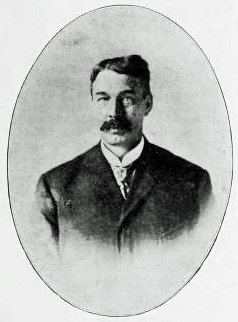

Though he seems never to have held elective office in the Chicago Coin Club, Charter Member 17 (February or March 1919) William Forrester Dunham was an avid booster. That very year he minted aluminum tokens inscribed WILLIAM F. DUNHAM/ ONE/ MILL/ 1919// GEORGE WASHINGTON/ ONE/ DISME/ 1792, using them as a premium to encourage others to join: for annual dues of one dollar, members received a free souvenir One Mill token in addition to the club Bulletin. Prior to the formation of the Club, he was President of the Chicago Numismatic Society in 1905 and 1907, Chairman of the American Numismatic Association Board of Governors in 1909, and a Governor in 1915.
Mr. Dunham (Oct. 3, 1857 - Oct. 12, 1936), a graduate of the University of Illinois, tried his hand at teaching school, then entered the grocery business. He later became wealthy as a druggist in Chicago and member of the Chicago Stock Exchange. His collecting interests stretched from Greek, Roman, and Japanese coins to United States coins, Hard Times Tokens, encased postage stamps, and Papal medals. In 1904 he bought the Dexter specimen of the 1804 dollar for $1,100, and in 1906 snared the H.P. Smith example of the 1822 half eagle for $2,165. Both coins were shown at the 1920 ANA convention in Chicago. (His remaining collection of U.S. coins was almost complete.)
He was the author of Easy Finding List of Hard Times Tokens (1910) and Check List of Encased Postage Stamps (1915), both still useful. A life member of the Art Institute of Chicago, he gave his collections of Greek, Roman, and Japanese coins and Papal medals to them. But he was more possessive of his United States coins: per Lee Hewitt (Hall of Fame No. 6) in 1961, citing J. Henri Ripstra (Hall of Fame No. 1), who was present, “the agent of the late J. P. Morgan … offered Mr. Dunham $40,000.00 for the 1822 half eagle — at that time $10,000.00 was the highest price that had ever been paid for a U.S. coin — and Dunham turned it down with the comment that Mr. Morgan with all his millions did not have enough money to buy that coin.” (In his catalog entry for the 1822 half eagle, B. Max Mehl gives $35,000 as the final offer.) With the rest of his U.S. coins, it remained in the Dunham Collection until his death. Of B. Max Mehl’s 1941 catalog of the Dunham Collection, John W. Adams wrote, “A+; Landmark Sale: …Definitive for encased postage, pattern dimes…”
(Image courtesy of Newman Numismatic Portal.)
Page history: created on 22-Feb-2019; last updated on 19-Sep-2019.